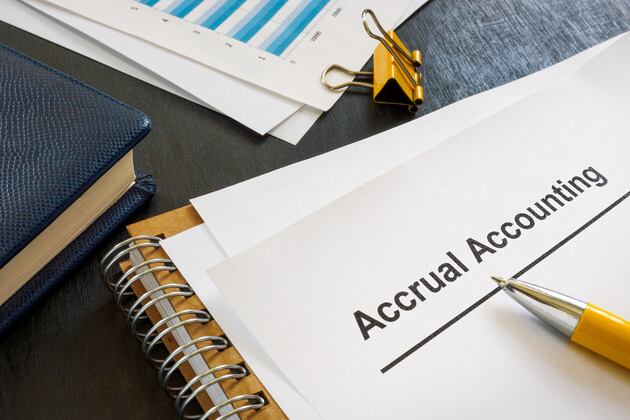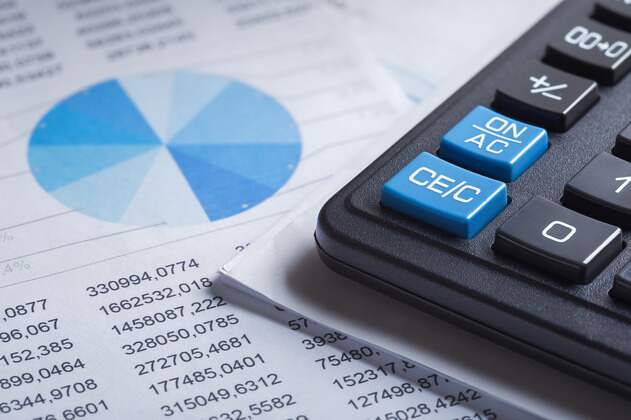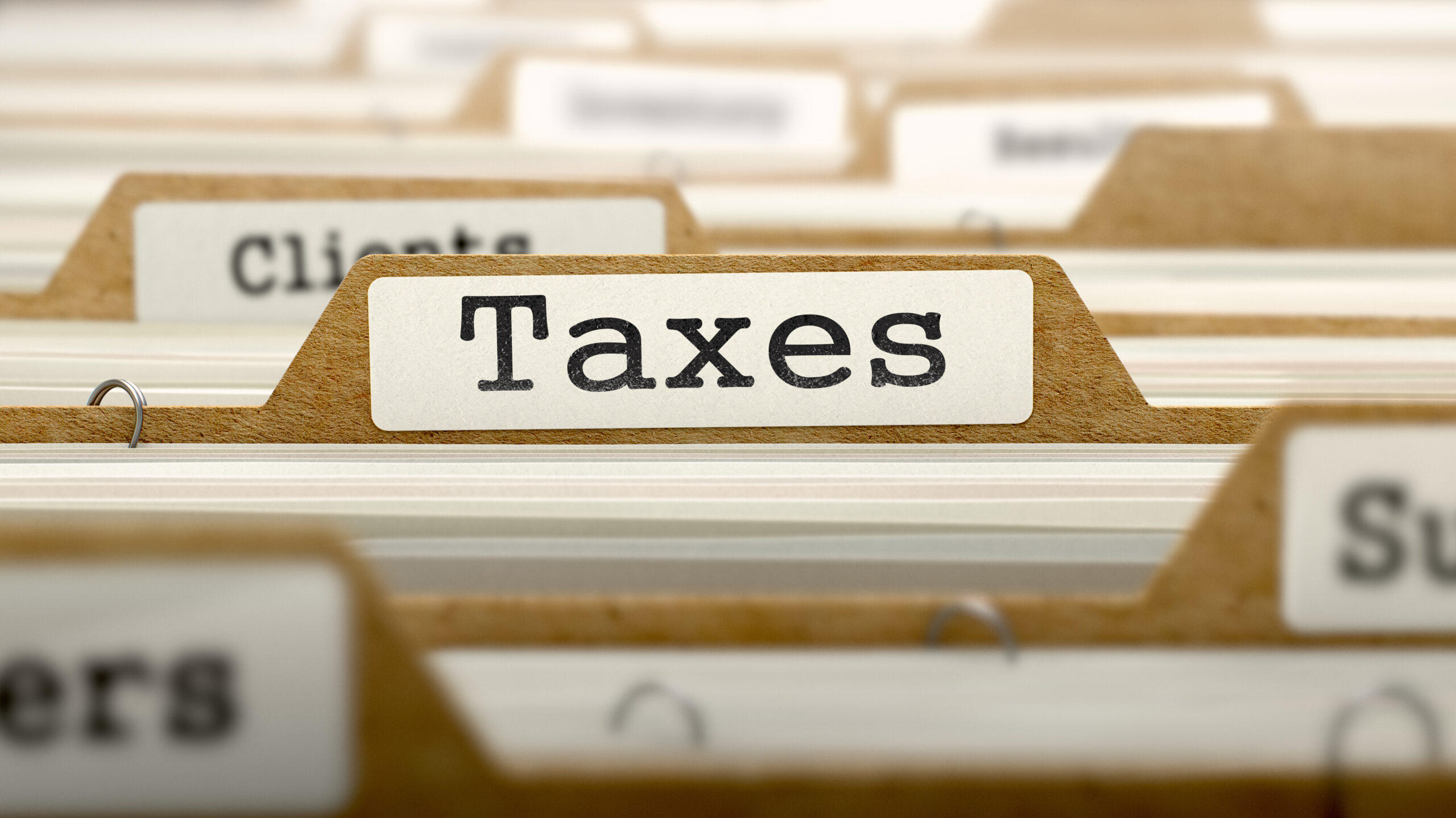Accrual Basis Accounting: Definition and How It Works
April 9, 2024

For smaller businesses, cash accounting gets the job done. You track money as it flows. But as your business grows, your accounting methods should, too. That’s where accrual basis accounting comes in.
Here’s everything you need to know about this accounting method.
What Is Accrual Basis Accounting?
Accrual accounting is a way for businesses to manage their financial activities. Instead of tracking cash flow, this method records transactions as they happen. It doesn’t pay attention to the actual money.
So, what’s the purpose of accrual basis accounting?
The accrual method gives a more accurate picture of a company’s financial health. It uses the matching principle, which records revenues and expenses at the same time. That means it tracks a business’s total economic activities, not just cash transactions. The business can see and understand its sales and costs right away instead of waiting for cash to come in.
RELATED ARTICLE — What Is Invoice Reconciliation?
When Should You Use Accrual Basis Accounting?

Many businesses don’t ask customers to pay with cash upfront. Think of law firms, which provide services first and the bill later. With accrual accounting, the firms can match sales to expenses in real time by recording transactions when they occur. This allows them to make more direct and accurate conclusions.
Let’s say the law firm charges $300 for a consultation, but clients don’t have to pay until later. The firm records the $300 income when the client agrees to a consultation, not after. This way, it knows it will have enough money to pay the lawyer.
Accrual accounting is too complex and expensive for simpler businesses. It uses more resources than simply tracking cash flow, and sometimes it’s just not necessary. If you sell goods at a market and only accept cash payments, tracking cash flow is enough. But if you accept any sales with credit, you should use accrual accounting.
Difference Between Cash and Accrual Basis of Accounting Explained
There are two main methods of accounting: cash basis and accrual basis. The main difference lies in when a business records transactions.
With cash basis accounting, a company recognizes revenue when receiving cash. And it recognizes expenses when paying for those expenses. This method is simple. It’s sufficient for small businesses with basic finances.
Accrual basis accounting has nothing to do with cash flow. A company simply recognizes revenue when it earns that revenue. Large businesses often use this type of accounting. It’s better because it provides a more accurate picture of financial interactions.
What Are the Benefits of Accrual Basis Accounting?

Accrual basis accounting lets a company match income to expenses so it always knows how much money there is. This makes it easier to spot mistakes and cash flow issues ahead of time.
The process also smooths out the effects of one-time or irregular transactions and expenses. Imagine a business buying a software subscription. It pays for the whole thing at once, but the subscription lasts five years. On paper, the business might spread out the expense over the five years to lessen the load and help with budgeting.
Accrual accounting is also part of the generally accepted accounting principles (GAAP). GAAP is the best practice in the industry. It’s also mandatory when you work with lenders and investors. So it’s easier to borrow and attract capital if your business is GAAP-compliant.
RELATED ARTICLE — How To Fill out a Rent Receipt (With Example)
4 Types of Accruals
Accrual accounting involves different types of financial transactions, also known as accruals. Here are four types:
1. Expenses
Accrued expenses are expenses that have been incurred but not yet paid. They help businesses recognize future costs. For example, a company might hire someone to do repairs but only pay after the repairs happen.
2. Revenue
Accrued revenue refers to income earned but not yet received. This happens when a company bills for services and waits for payment.
3. Prepaid
Prepaid accruals happen when a company pays for something in advance. If a company buys insurance for the upcoming year, it records the cost as prepaid. It then spreads out the expense over the coverage period.
4. Deferred
Deferred accruals note down revenue or expenses after payment. If a company gets paid for future services, it records that money as deferred revenue. It does this until it delivers those services.
RELATED ARTICLE — How To Keep Track of Invoices & Payments
6 Tips To Set an Accrual Basis Accounting System Successfully

Here are some tips for using the accrual method:
1. Set Up a Chart of Accounts
Organize your bank accounts in a way that reflects your business’s financial activities. For example, you might have separate accounts for sales, expenses, and taxes to monitor where your money comes and goes. This makes it easier to track transactions accurately.
2. Make a Revenue Recognition Policy
Know when to recognize revenue. Everything should be in the right accounting period. It should also meet GAAP standards.
3. Create Control and Checking Procedures
Set up internal controls that double-check transactions every time. This makes sure your financial data is accurate.
4. Look at Your Books Periodically
Compare your records with bank statements and other financial documents. You’ll spot any differences and errors before they become problems.
5. Keep Your Data Up To Date
Update your accounting records often. This shows the latest transactions and changes in your business.
6. Hire a Bookkeeper
If managing your books feels overwhelming, hire a professional. They can help you keep accurate records and follow the standards.
Business Expense Tracker
Looking for a more convenient way to track expenses? Invoice Simple’s business expense and receipt tracker lets you scan any receipt. It captures key info automatically. All your expense data is ready to export into a summary report whenever you need it.












